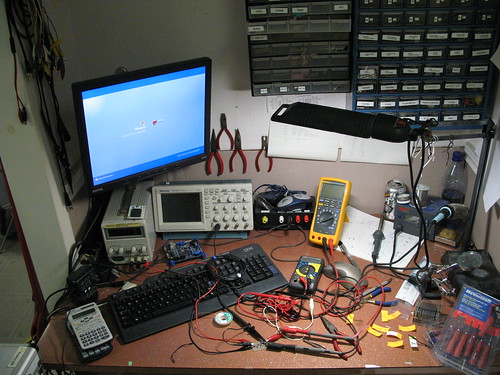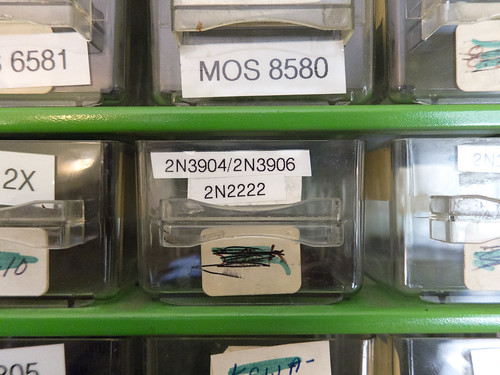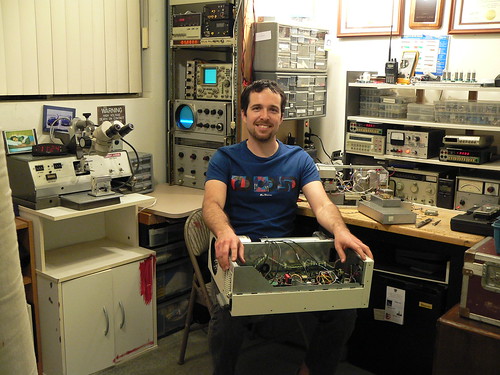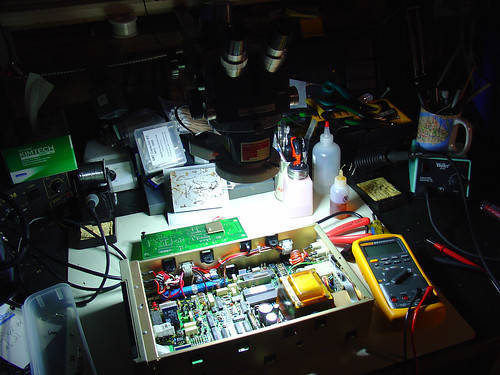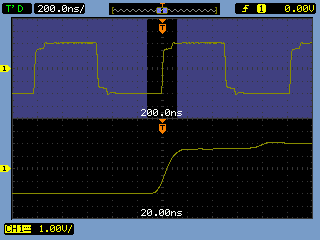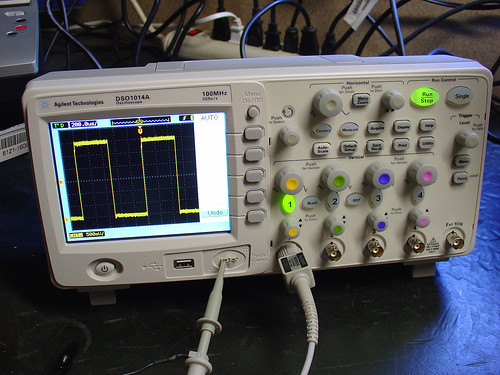A few weeks ago, I purchased an HP 3312A 12MHz function generator for the lab. After living without a decent signal source for years, I figured that it would bepo handy to have a good general purpose function generator around. A quick visit to eBay and a few clicks later, one was on the way.
Unfortunately, when I first powered it up, the output was clamped to one supply rail and the sync output was giving me a much-too-large, out of spec voltage swing. D’oh!
The generator was sold as-is (like most test equipment on eBay), so I decided to take a crack at fixing it myself. Armed with a barely intelligible, poorly scanned-faxed-photocopied copy of the 3312A service manual that I downloaded from Agilent’s website, I loosened two captive screws and slid the top and bottom covers off the unit.
What I found inside really blew me away. What follows are some snapshots of the unit.
The 3312A is the most elegantly designed and well-preserved piece of electronic test equipment I that have ever owned. The circuit boards, which look brand new, use entirely two-layer through-hole construction and are laid out with generous component spacing and helpful silkscreen labels. There is no inter-board wiring to prevent quick removal of any of the PCBs; all of the wiring harnesses use straightforward connectors. Connections between the top and bottom PCBs are via clever gold plated removable posts that extend through the center panel of the instrument chassis. The chassis itself, which is cast aluminum, is light but sturdy. Every aspect of the instrument design appears to have been carefully thought out and is perfectly executed.
Here’s the 3312A on the bench, ready for some serious troubleshooting action:
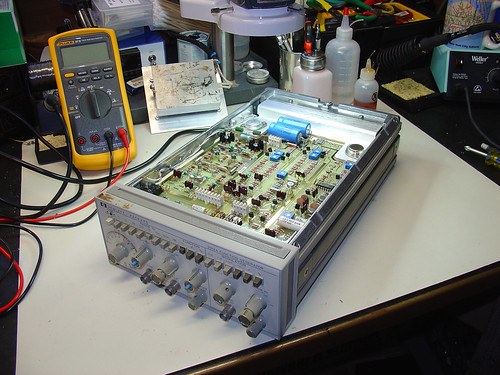
The aforementioned aluminum chassis. Very nice!
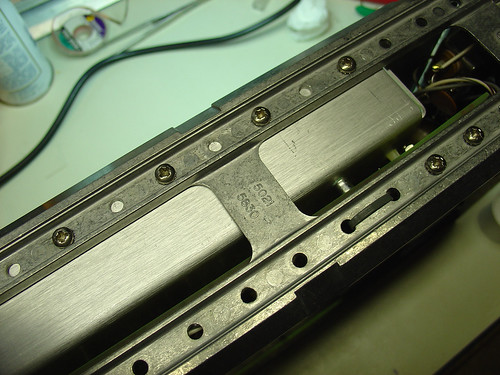
When I flipped the generator over, I immediately noticed a problem. Here are the remains of four 200 ohm, 1W carbon resistors, burnt to a crisp:
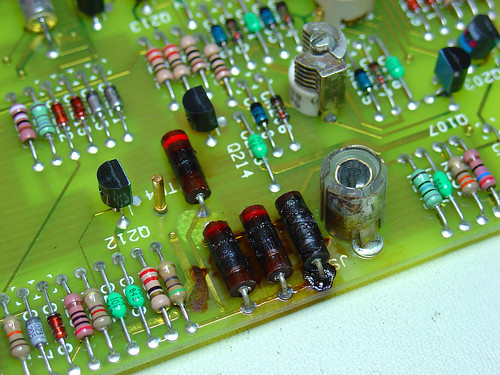
These resistors provide an internal 50 ohm termination for the sync output, and explain why the sync voltage swing was out of spec. A quick trip to Jameco for some new 200 ohm power resistors and the sync problem was fixed.
The broken main generator output took some more serious troubleshooting. One of the emitter follower transistors that drives the push-pull output driver was burning hot to the touch and a good candidate for replacement. An hour of troubleshooting with the diode test function of my Fluke 87V identified one of the push-pull transistors had failed as well. This is the device that had failed short and was clamping the output voltage to the -15V supply rail.
The final push-pull drivers are shown here; they are the two devices with the largest heatsinks. The emitter followers are the two metal can transistors just to the left.
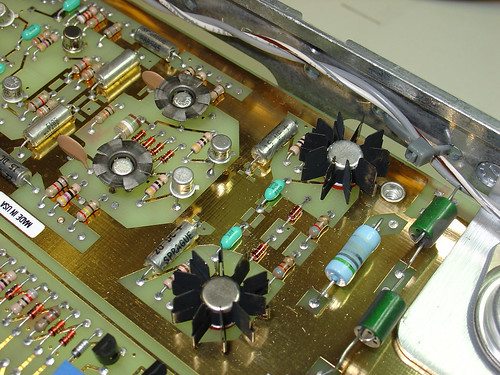
I was able to find suitable replacements for the failed transistors at Jameco. Neither of the original devices were still available but I was able to find some devices that were “close enough” by examining a few datasheets and cross reference guides. With the faulty output devices replaced, the generator powered up and was good as new!
Here’s another couple shots of the main PCB. Gorgeous gold-plated traces and component layout, and some pretty components too:
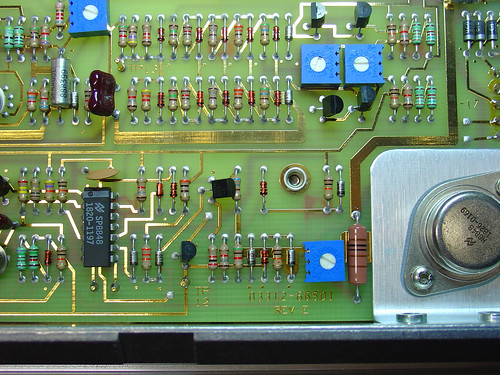
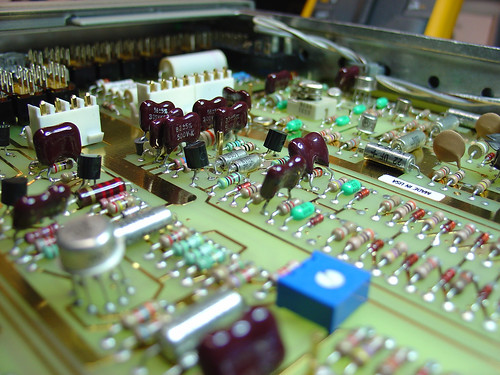
Here’s a shot of the inside of the generator with the top (modulator) PCB removed so you can see the header posts that connect the top and bottom PCBs. The center aluminum plate that holds the pins in place is also removable. This allows for rework of components on the bottom (main) PCB without disassembling the entire instrument. Cool!

Want to see more? Check out the 3312A repairs album on flickr!


